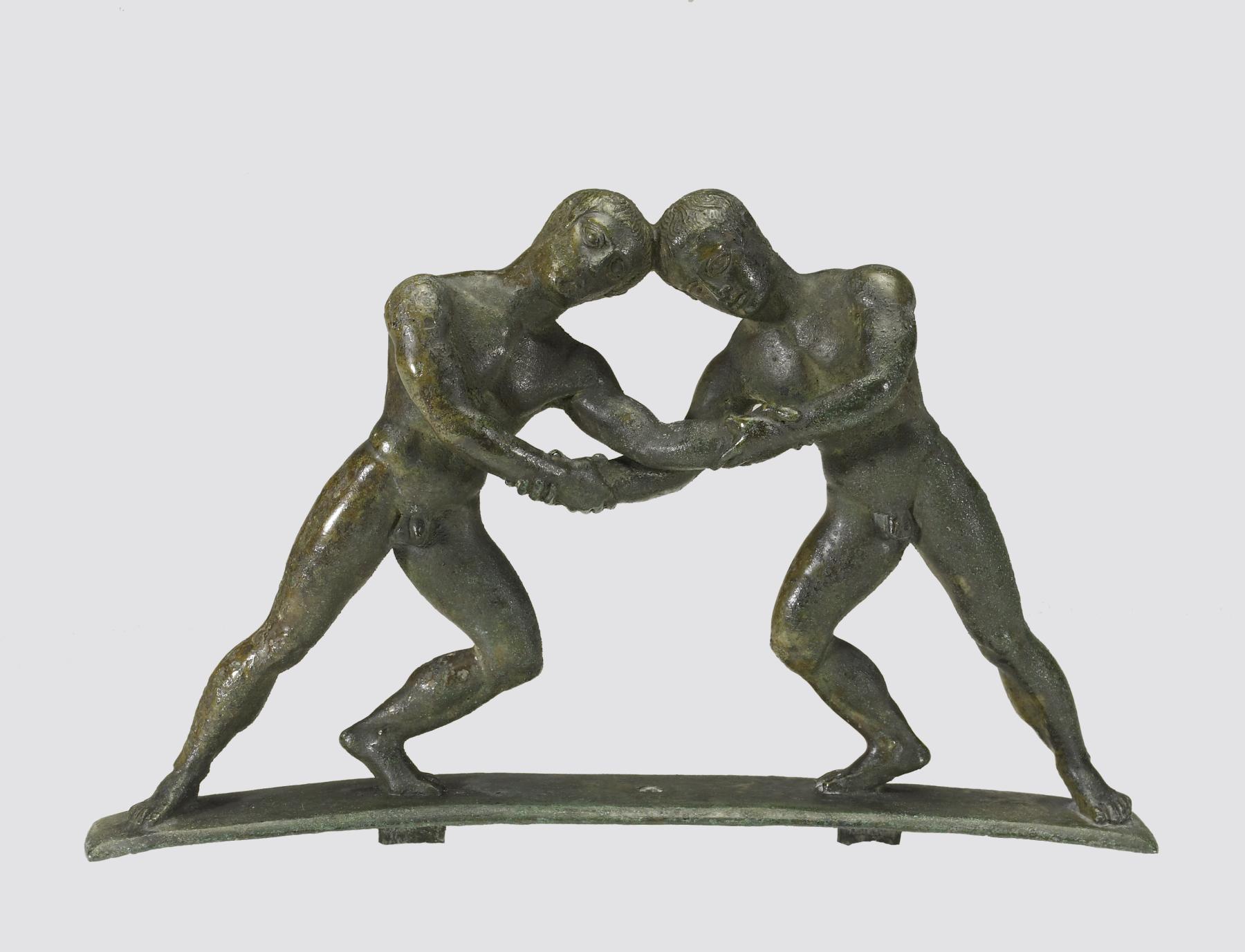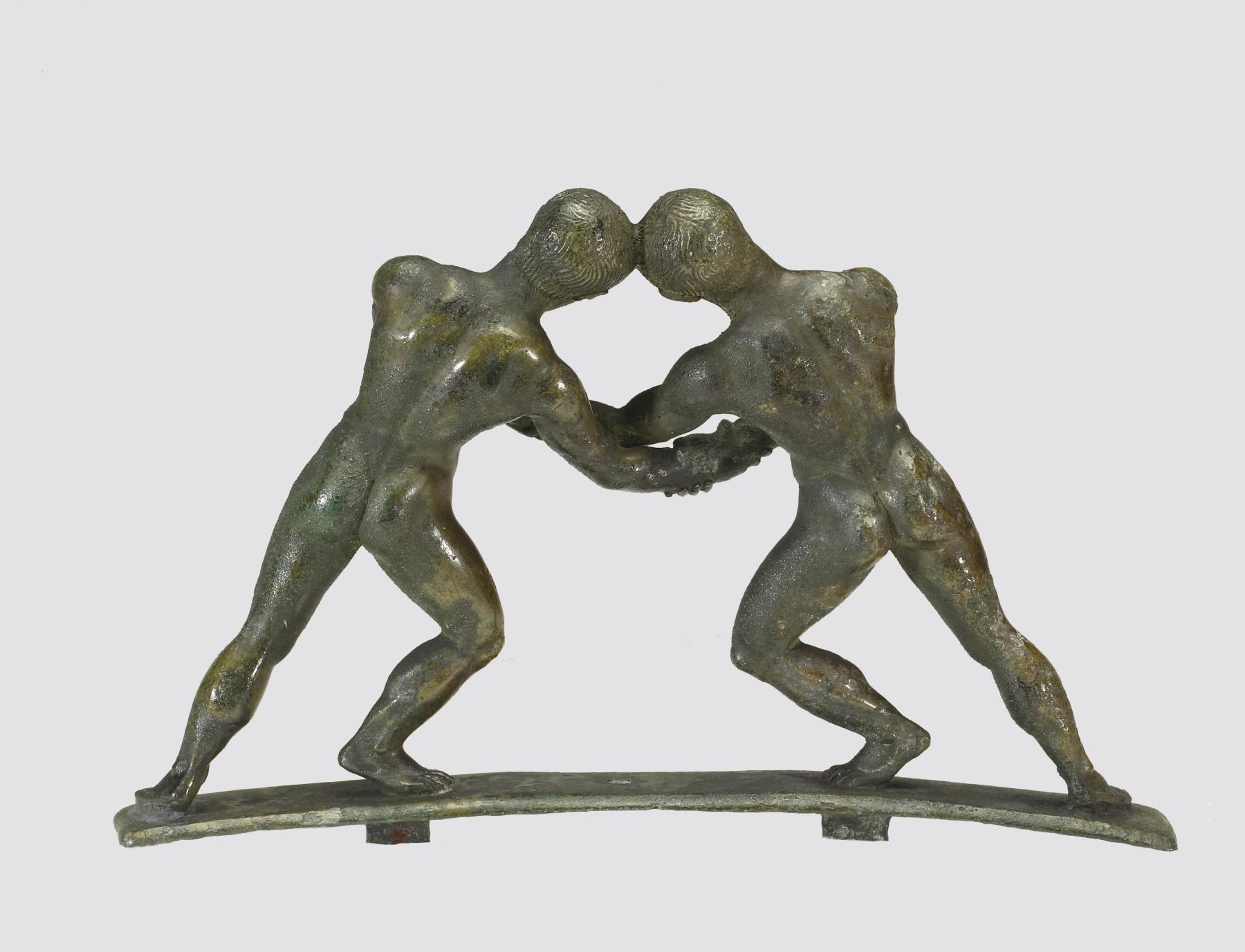Cista Handle in the Form of Two Wrestlers
(Roman Empire )
Cistae were containers used to safeguard precious objects, including mirrors, perfume flasks, and cosmetics. A particular type of cista was made during the 4th to 3rd centuries BCE in Praeneste, a site in Latium (the region around Rome) that was heavily influenced by Etruscan culture. The elaborately engraved scenes are thought to imitate famous, but now lost, Greek wall-paintings. The ancient metalworker often pressed a white substance into the engraved lines in order to accentuate the decoration. The handles commonly take the form of human figures. Many artists in other early Italian cultures similarly incorporated figures of humans in functional objects.
The intertwined forms of these wrestling youths create a lively and complex handle for this cista. The disproportionately large heads and oversized facial features are typically Etruscan.
Provenance
Provenance (from the French provenir, 'to come from/forth') is the chronology of the ownership, custody, or location of a historical object. Learn more about provenance at the Walters.
W. H. Forman Collection Sale, London, 1899, no. 141; Henry Walters, Baltimore, [date of acquisition unknown] by purchase; Walters Art Museum, 1931, by bequest.
Exhibitions
| 1964-1965 | Man: Glory, Jest, and Riddle, A Survey of the Human Form Through the Ages. Fine Arts Museums of San Francisco, San Francisco; Fine Arts Museums of San Francisco, San Francisco. |
Geographies
Italy (Latium) (Place of Origin)
Measurements
4 7/16 x 7 1/16 x 1 3/16 in. (11.3 x 18 x 3 cm);
mount: 2 9/16 x 8 1/8 x 2 11/16 in. (6.5 x 20.7 x 6.8 cm)
Credit Line
Acquired by Henry Walters
Location in Museum
Accession Number
In libraries, galleries, museums, and archives, an accession number is a unique identifier assigned to each object in the collection.
In libraries, galleries, museums, and archives, an accession number is a unique identifier assigned to each object in the collection.
54.936






